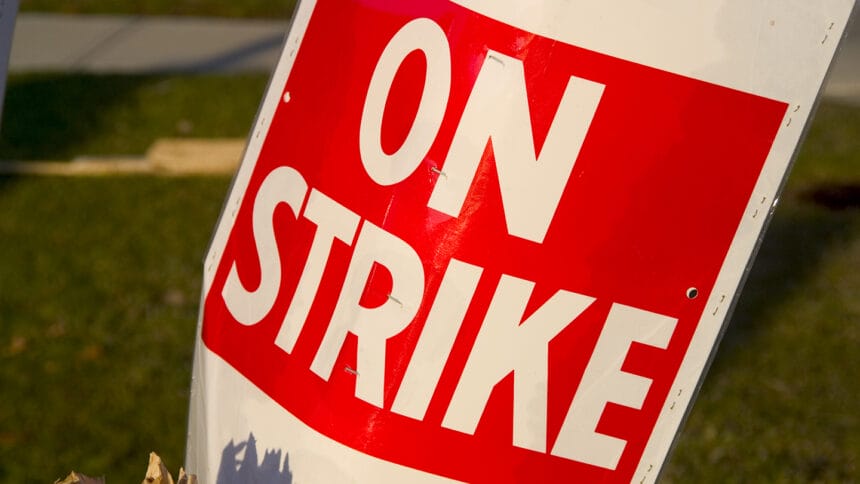
Heightened union activity frequently made headlines this year, including among healthcare workers who loudly raised concerns about pay and staffing.
Multiple factors make it likely that the trend of rising labor activity in long-term care will continue in 2024, experts say.
In 2023, care workers and others across the US — from writers and actors, to auto workers — launched high-profile strikes, often successfully bargaining for higher pay and improved working conditions.
These strikes capitalized on shifting workforce conditions and public opinion, Adam Dean, PhD, associate professor of political science at The George Washington University, told McKnight’s Long-Term Care News.
Only 16% of nursing homes currently have workers that are represented by a union, but that number is likely to increase if today’s trends hold, he added.
“There’s enormous potential for the growth of unions in that sector and I think that the big labor wins that people have been following in the news … set the stage nationally for what’s possible when workers unionize,” he said. “I think that will set the stage for 2024. I expect to see more organizing and more strikes to come.”
Striking a good balance?
Dean was optimistic that such labor activity would benefit both workers and the long-term care industry as a whole.
“I expect that it will improve the quality of healthcare that residents or patients receive,” Dean noted, citing a study he coauthored that found unionized nursing homes were 78% more likely to comply with illness and injury reporting regulations.
In skilled nursing, pressure from organized labor has been mounting since the early days of 2020, when workers threatened to strike over pandemic working conditions and the availability of safety equipment.
October 2023 saw the largest strike ever recorded in the healthcare sector as 75,000 Kaiser Permanente workers walked off the job for three days. That strike culminated in a 6% pay increase and promises of additional action to address staffing shortages.
Going into 2024, pay and staffing continue to top the list of labor issues that could become the spark for organized action
“The SEIU and other labor unions that represent healthcare workers have been pushing for higher nurse-to-patient ratios,” Dean noted.. “I expect those kinds of fights to continue.”
One key factor in the current labor upswing is the low rate of unemployment.
Broad forces in play
“We have a low unemployment rate currently in the United States, which gives workers greater bargaining power with their employers,” Dean noted.
That rate sits at only 3.7%, giving workers the confidence to make demands of their employers since they are likely to be able to change jobs quickly if necessary.
“It gets [workers] into a position of relative security,” Jason Resnikoff, PhD, assistant professor of contemporary history at the University of Groningen told NBC Washington. “It makes it much easier for them to go on strike.”
During 2023’s increase in strikes, public opinion shifted in favor of unions, especially among young Americans, some feel.
“There’s a growing public support for unions and strikes,” Dean said, citing a study from the American Federation of Labor and Congress of Industrial Organizations. “88% of Americans 30 and younger have a favorable view of labor unions.”
The AFL-CIO study found that 71% of Americans supported unions overall.





